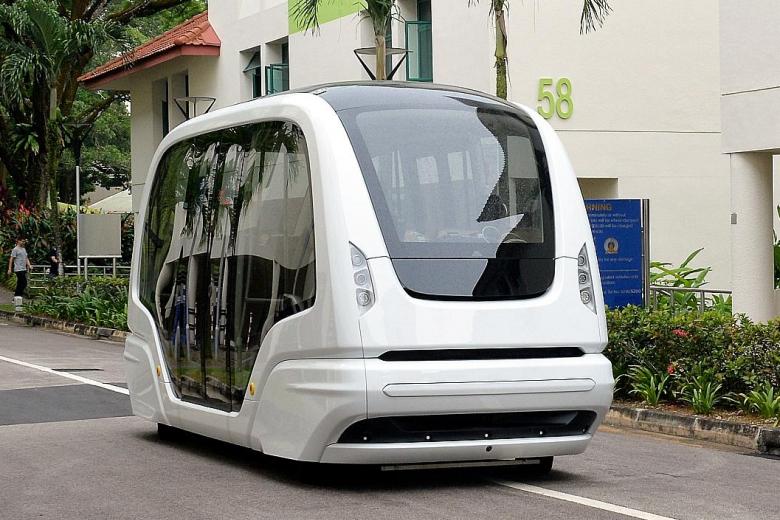
In a few months, rushing to class could mean
hopping on a driverless shuttle bus for Nanyang Technological
University (NTU) students.
The vehicle, which can travel at speeds of up to 40kmh,
will carry 24 riders on a 500m route connecting student halls with
the main academic areas.
Ferrying up to 300 passengers a day, it will encounter
obstacles such as pedestrians and traffic, all vital input for the
machine to learn how to get around in the real world.
Yesterday, NTU signed an agreement with Dutch company
2getthere and SMRT Services - the transport operator's operations
and maintenance arm - to introduce the buses to NTU's campus.
In April 2016, SMRT formed a joint venture with
2getthere to bring driverless vehicle systems to Singapore and the
region, acquiring a 20 per cent stake - worth $6 million - in the
Dutch company later that year.
Since November last year, the bus has been tested along
a 350m route between two student halls on the NTU campus, safely
carrying about 4,000 passengers in total.
There are plans ahead for it to eventually traverse the
entire campus and beyond - connecting NTU to neighbouring CleanTech
Park.
To help it "see" its way around, the bus is equipped
with cameras as well as lidar (light detection and ranging) and
ultrasound sensors.
Small magnets embedded in the road act as navigation
guides.
The vehicle can get through heavy rain and knows to
avoid pedestrians, said 2getthere chief technology officer Sjoerd
van der Zwaan.
The autonomous vehicle will also be integrated into
Jalan-Jalan, an app that integrates various transport modes such as
e-scooters and shuttle buses on campus.
The app - developed by start-up mobilityX - is being
tested at the NTU campus and CleanTech Park
TNP